Coffee deep roasting and light roasting
Deep roasting and light roasting is simple, coffee beans are called deep roasting after the second burst, and before the first explosion is dense to the second burst, it is called light roasting to medium-deep roasting, and the color is closer to black with the deeper the roasting.
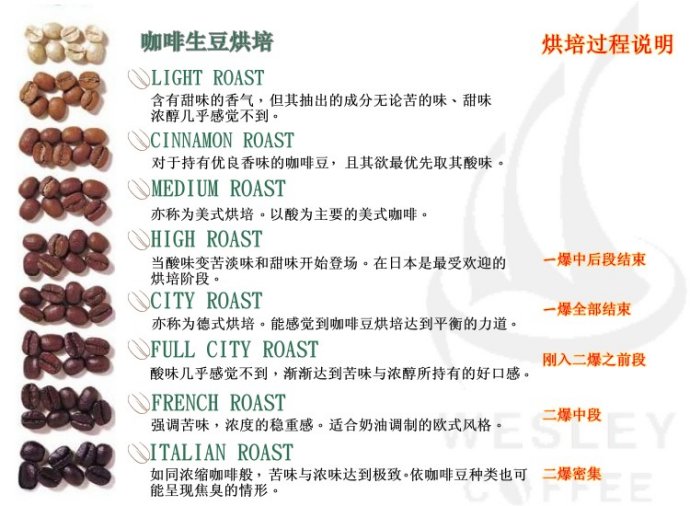
First of all, let's talk about deep roasting. When it comes to deep roasting, be sure to talk about the legendary figure of the coffee industry-Alfred Peet. Mr. Pitt devoted himself to promoting heavy-roasted coffee (deep roasting) in the 1960s, when roasters roasted coffee beans to an explosion in order to reduce costs. At this time, the weight loss of coffee beans due to roasting is about 10%. It is 10% less than roasting, that is, in order to reduce the cost by 10%, regardless of selling coffee beans with underdeveloped flavor to consumers (this does not mean that shallow roasting is not good. It refers to the behavior that only reduces the cost and ignores the flavor.
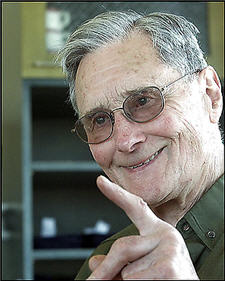
Avery Pitt (Alfred Peet)
After World War II, coffee consumption in the United States increased year by year. In order to expand profits, roasters at that time became shallower and shallower. On the one hand, they could save man-hours and fuel costs, and on the other hand, they could reduce the weight loss ratio of cooked beans. At that time, coffee beans were in a hurry to be baked at the beginning of the explosion, and the weight loss ratio was less than 9%. Compared with the deep-baked beans baked after the second explosion, the weight loss ratio of shallow-baked beans was as high as 18%, and the profit of shallow-baked beans was at least 10% more than that of deep-baked beans. This is the trick used by unscrupulous people in the early days to make money by shallow baking, and even more seriously mixed with a large number of sun-dried beans. You can imagine how bad the coffee was at that time. No wonder it was ridiculed as "dishwashing water coffee". But consumers have long been accustomed to half-cooked sour bitter coffee, in order to be more palatable, had to add more water dilution, so light as water thin coffee, is the popular taste at that time. As long as caffeine is refreshing, no matter whether the coffee looks like sour or sour water. This is to blame that in order to preserve convenience during the war, the coffee allocated to frontline officers and soldiers by the US military was either very shallow roasted or instant coffee. These people enter society after retirement, naturally bringing the over-diluted taste of light coffee into the workplace. During the decade or two after the war, Folgers and the Hills Bros brothers, big American roasters, made great efforts to promote very lightly roasted canned coffee beans (powders). Over time, people did not know what fresh coffee was, and became accustomed to stale coffee, which tasted as good as sugar and cream. Rotten coffee is a hangover after the war, and it is also a phenomenon in Europe. Because the people are fully engaged in reconstruction, there is no way to talk about eating and drinking. This is why at that time, the American baking industry only wanted to enjoy huge profits and did not have the moral courage to denounce this unhealthy trend of "A money" in disguise.
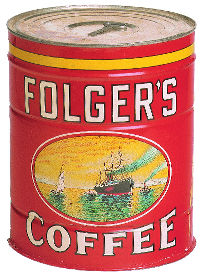
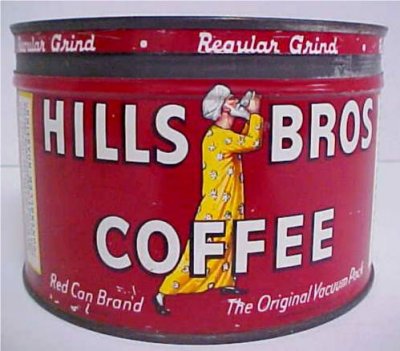
So Mr. Pitt opened Peet's Coffee& Tea coffee and tea in San Francisco on the west coast of the United States in 1966, insisted on using 100% Arabica beans, and never sold coffee beans before the second explosion. If the deep-baked beans are roasted and brewed in the right way, you can get a very sweet, rich and thick coffee, which is completely different from the bitter and astringent coffee in general impression. "Bizi Coffee" disdained the most popular half-cooked shallow baked beans at that time, instead took the deep roasting (deep roast) route, regardless of single or mixed beans, baked until the middle and later stage of the second explosion, and changed to the more heat-resistant Arabica hard beans as the formula, that is to say, you can never drink the shallow baked beans or Robasta beans before the second explosion in the "Bizi Coffee".
Mr. Pitt also teaches you the correct brewing method. He brewed coffee with twice the concentration of light coffee that was popular at that time, that is, grinding coffee powder on the spot with 30 grams and using a French filter kettle to brew 360 kilos of coffee, changing the bad habit of brewing 360 kilos of light coffee with 10 to 15 grams. People who drink Bitz Coffee for the first time are likely to shout, "Wow, are you going to poison me?" So strong! then when the coffee blossomed in the mouth and experienced a taste bud shock education, they changed their tune one after another and said, "Wow, it's so strong, it's so good to choke, and Gandy moistens the throat!"at the beginning, most of the connoisseurs were European immigrants, and they finally found jelly-paste coffee in the United States. Interestingly, smelly hippies who haven't bathed for days like to gather at "Bitz Coffee", sitting or lying down, as if they had come here to receive an incense bath of re-baked beans. Hippies hanging in groups in the store is a major feature of "Bitz Coffee". Although there is both smelly smell in the restaurant, people who walk into "Bizi Coffee" can't help but take a big breath and experience the world of smell, including the unique incense of re-baked beans, wine, coffee essential oil, banana oil, and hippies' unique smelly socks and body odor.
Later, the founders of Starbucks, Jerry Baldwin, Gordon Bowker and Zev Sieg, decided to open a cafe because they fell in love with Mr. Pitt's coffee, and at first they got Pitt's help, not only to provide Bitte's roasted coffee beans to Starbucks to sell, but even the furnishings in the store were similar to those of Pitt Coffee at first. It can also be said that if it were not for Pitt, there would be no Starbucks now, so that we all know the great influence of Mr. Pitt on you and me! I would like to pay the highest tribute to Mr. Pitt's contribution to coffee!
When it comes to shallow baking, mention George. George Howell, who lived in San Francisco from 1968 to 1974 and was also obsessed with Bitte Coffee, moved to Boston but couldn't find any freshly roasted coffee like Bitt. Since he couldn't buy it, he sold it himself, so he established the Coffee relationship (Coffee connection) in 1975.
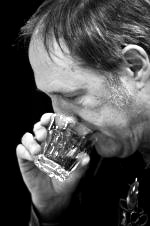
George。 Huo Wei (George Howell)
But after all, legends are legends, and Pitt's re-baking techniques are not so easy to imitate (it is said to be related to Pitt's self-modified roaster), so Howie changed to shallow roasting in a fit of anger. Under the "right" approach, the bright sour flavor of shallow roasted coffee beans is quite charming, and coffee beans in different producing areas have obvious differences in flavor. Since then, Hawway has changed to shallow baking, which is popular on the east coast of the United States, competing with Bitt's re-baking on the west coast of the United States.
(later, the coffee relationship was acquired by Starbucks, and all Starbucks signs were put up within two years, and the usual shallow baking was changed to Starbucks brand re-baking.)
In fact, it has been talked about a lot, and the main point is very simple:
Deep baking-sweet, rich and full-bodied
Shallow roasting-bright sour flavor, distinct flavor of coffee beans from different producing areas
Similarly, some people like deep baking, and there is also a group of people who like light baking, no matter deep baking or shallow baking, all have their own unique flavor, as long as there is no bad taste (such as bitter, astringent, salty, etc.), which is better, it all depends on personal tastes and preferences! So bloggers often say that whether coffee is good or not is often a personal preference, while coffee is fair and free!
Important Notice :
前街咖啡 FrontStreet Coffee has moved to new addredd:
FrontStreet Coffee Address: 315,Donghua East Road,GuangZhou
Tel:020 38364473
- Prev

Roasting determines the taste of coffee
Generally speaking, each coffee cherry contains two raw beans, and the fragrance is still hidden, waiting to be discovered. In raw beans, it contains a lot of chloric acid. As the baking process, chloric acid will gradually disappear, releasing familiar and pleasant fruit acid-such as acetic acid, citric acid, malic acid in wine. Baking is just right, it can present these beautiful sour taste moderately; on the contrary,
- Next

Coffee roasting utensils and roasting degree
The coffee raw bean itself does not have any special taste, it is roasted to completely change and reorganize the substances inside the raw bean to form a new structure, thus bringing out the mellow flavor of the coffee.
Related
- Beginners will see the "Coffee pull flower" guide!
- What is the difference between ice blog purified milk and ordinary milk coffee?
- Why is the Philippines the largest producer of crops in Liberia?
- For coffee extraction, should the fine powder be retained?
- How does extracted espresso fill pressed powder? How much strength does it take to press the powder?
- How to make jasmine cold extract coffee? Is the jasmine + latte good?
- Will this little toy really make the coffee taste better? How does Lily Drip affect coffee extraction?
- Will the action of slapping the filter cup also affect coffee extraction?
- What's the difference between powder-to-water ratio and powder-to-liquid ratio?
- What is the Ethiopian local species? What does it have to do with Heirloom native species?

